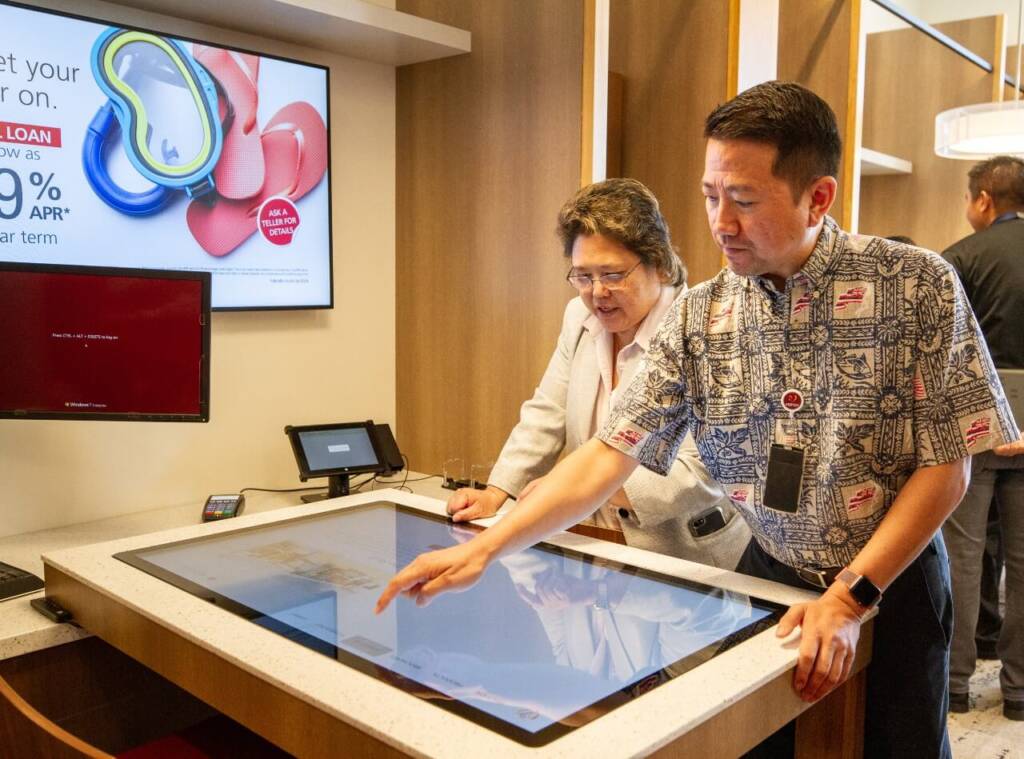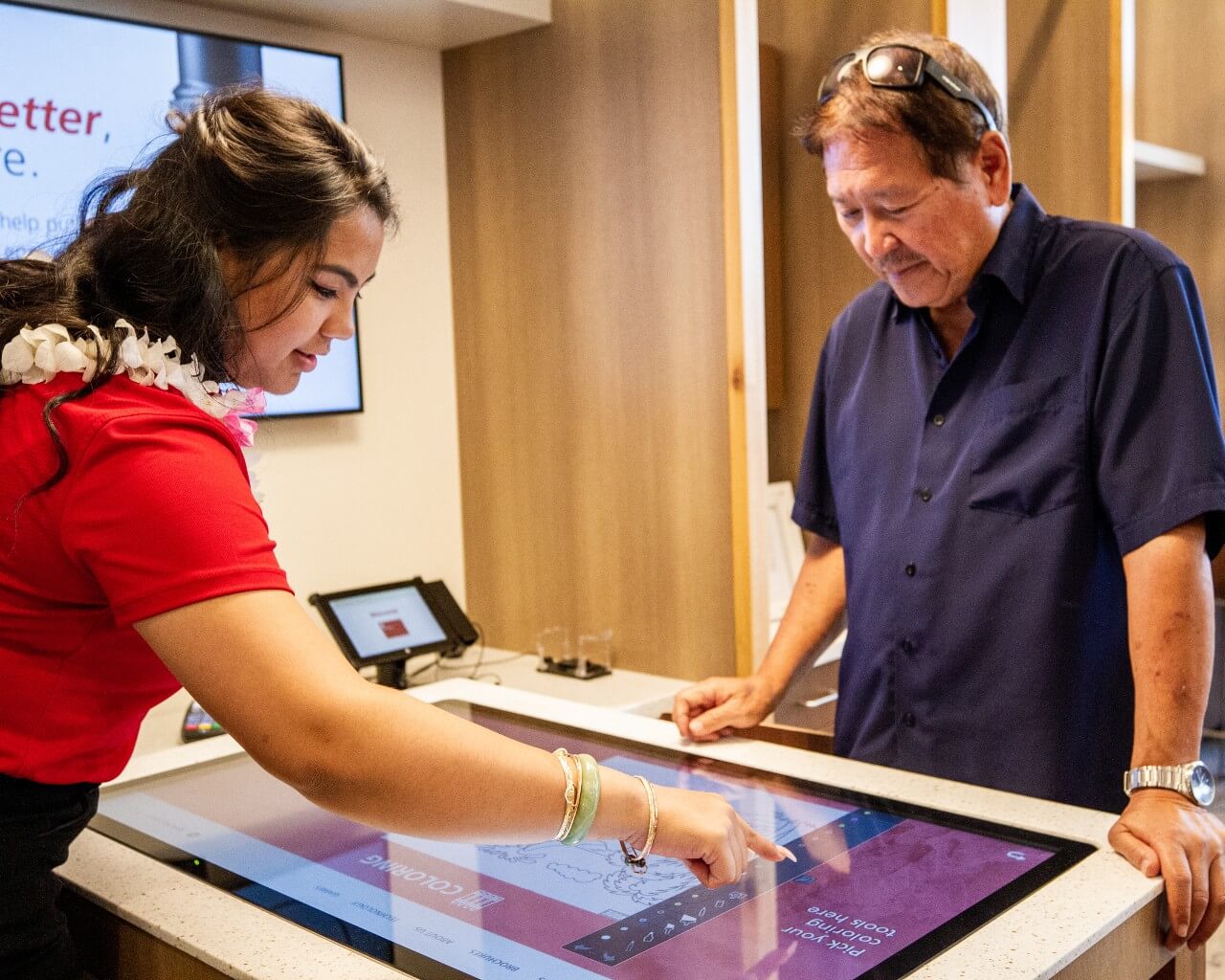Retail banking trends come and go, but the one thing that remains constant is the value of bank experience. Banks and credit unions must stay up-to-date on customer experience best practices, regularly train and retrain their teams, and solicit customer feedback to ensure they deliver the best service possible.
Customer experience in financial services goes beyond just meeting expectations — it’s about delivering a seamless, engaging retail experience. In this post, we’ll explore key trends and strategies to identify and improve weak spots.
what is customer experience in banking?
Today’s consumer, regardless of the product or service they’re purchasing, values the retail experience. Once a transaction moves beyond the level of a vending machine, there is an expectation for a seamless buying process, excellent customer service, and maybe a little fun along the way. Customers are more likely to have a positive perception of an organization that is user-friendly, responsive, and values their support.
The customer experience (or CX) revolves around how customers perceive their interactions with a company. This includes how your employees treat them, how simple (or complicated) the processes are, and whether they feel their money was well spent. When it comes to the customer experience in financial services, it’s also largely about how safe bankers perceive their money to be with a particular institution.
Research undeniably shows the value of positive customer experience: “73% of all people point to customer experience as an important factor in their purchasing decisions. Yet only 49% of U.S. consumers say companies provide a good customer experience today.”
The customer experience isn’t limited to interactions with a teller or financial specialist. It’s informed by a customer’s interactions with every retail touchpoint, including websites, mobile apps, call centers, chatbots, social media, email communications, and even passive marketing, such as seeing a billboard or television commercial. Every encounter matters. Both leadership and frontline teams must understand how to harness that power.
key trends impacting customer experience in banking
Technology moves fast. In retail banking especially, it can sometimes feel like the industry masters one trend or tool, only to face rising consumer demand for the next innovation. However, true longevity doesn’t come from the technology itself but from how seamlessly it integrates with the human element. Regardless of specific tools, consumers of today and tomorrow will require the following from their favorite brands:
- Digital presence and mobile compatibility
- Consistency across messaging and channels
- Fast service and quick issue resolution
- Corporate alignment with their values
Let’s look at a few elements that are currently or are poised to shape the banking customer experience.
Mobile apps
If your bank or credit union doesn’t offer a mobile experience, it’s time to start building one — or say goodbye to prospective customers who prioritize that convenience. Since self-service is the fastest-growing banking customer experience trend, banks and credit unions must provide simple, comprehensive ways for their users to manage their finances without having to stop at a branch. Fortunately, there are plenty of low-code app development platforms to help you build a banking app from scratch.
In addition to completing basic transactions, app users can purchase banking products, open new accounts, and make appointments to speak to a financial specialist. Apps can also collect customer data that can then be used to promote products and services to the users most likely to need them. Omnichannel compatibility — or the ability for all banking platforms to integrate with one another — ensures that customers can expect the same level of convenience and efficiency on your app as in your branch.
Artificial intelligence (AI)
While not every financial institution (FI) leverages this technology, AI-driven chatbots and answering services are increasingly becoming a key part of the customer experience in financial services. Chatbots are programmed to recognize certain keywords or phrases, and can then direct customer inquiries to the right live specialist who can address and deliver more nuanced service.
However, as AI adoption grows, it’s essential to address customer concerns by maintaining transparency, ensuring the highest level of security, and emphasizing that AI is meant to enhance — not replace — the personal banking experience.
“AI is no longer a futuristic concept in banking, it’s a way to empower credit unions and banks to create smarter, more connected, and customer-centric branch experiences.” —Marc Healy, executive director of retail and marketing
Humanizing the digital
A combination of AI and live customer service may deliver the best branch experience available. Consumers desire speed and simplicity, but they also value empathy and personalization. There’s no true substitute for the “human touch,” so incorporating the ability for a chatbot to escalate an issue to a live representative (or even provide that as an alternative) can positively impact the overall customer experience.
Personalization
Consumers like to feel seen and acknowledged by their favorite brands, even with something as simple as a customized email greeting (“Hi, [your name here]!”). Whether their first touchpoint is digital or face-to-face, bank customers appreciate recognition from their financial institutions. When prompted to provide their account number or any other identifying information, customers expect their FI to draw upon existing data to provide tellers and specialists with the right information, suggest helpful products or services, and even predict when their accounts are due for an upgrade or when they qualify for special offers.
Small, personalized touches like these go a long way in ensuring customer loyalty; personalization in banking can increase annual revenue by 10%, according to Boston Consulting Group.
Proactive engagement
This is perhaps the most difficult trend to adopt gracefully since it’s easy to turn consumers off by being too proactive. For example, one too many email newsletters can quickly trigger a click of the “unsubscribe” button. However, by utilizing all digital channels and consumer touchpoints to monitor users’ financial health, life events, purchases, and customer service requests, savvy FIs can proactively offer opportunities to help customers better manage their finances or plan for their financial future.
10 ways to improve your bank’s or credit union’s customer experience
The most important tip for optimizing the customer experience in banking is to show that you truly understand the customer journey.
Deploying CX surveys can help put an objective lens on customers’ journeys, which will inform the specific tactics you use to improve their experience.
Here are some approaches you can take to make your customers’ experiences as seamless and positive as possible.
1. Build your “branch of the future.”
This isn’t so much about upfitting your physical branch with holograms and a laser show; rather, this approach reimagines what a bank or credit union branch can be. Physical branches are steadily transforming into hubs of consultation, rather than storefronts for routine transactions. Since mobile apps grant anytime access to users’ accounts, there may be little need for customers to visit a branch to make a deposit or transfer — unless they’re looking for expert consultation and financial guidance.
Boost your branch experience by utilizing new self-service technologies. Interactive teller machines (ITMs) present a helpful opportunity to offload transactional interactions, freeing human agents to fill more of a consultative, educational role. Financial institutions can increase credibility by positioning financial agents as advocates who are experts at helping customers find the best ways to manage their finances.
Think outside the box when reimagining your physical space; take cues from Capital One’s café spaces, Apple’s walk-up Genius Bar, or even a furniture showroom, with designated seating areas that encourage conversation. Replace the straight-laced teller line with self-service options, conference pods, and community spaces that offer flexibility and set visitors at ease. Utilize digital signage to make sure your bank or credit union stays engaged with the community even when closed, educating anyone in the area about programs and offerings.
A customer-centric mindset emphasizes empathy and makes customers feel valued. By prioritizing this, you’ll build the trust and loyalty required for long-term success.
2. Implement an experience-led growth strategy.
Banks and credit unions increasingly use customer experience as a key driver for growth, recognizing that delivering exceptional service leads to stronger customer loyalty, higher retention rates, and, ultimately, increased revenue. Focusing on experience-first strategies, such as personalized banking services, omnichannel banking, and loyalty/reward programs, financial institutions can differentiate themselves in a competitive market.
3. Offer and expand self-service options.
At this point, self-service in banks and credit unions is a must. Not everyone can get to the branch during business hours, so providing a way for customers to access their accounts, make deposits, and even reach a live teller off-hours is crucial. Self-service equipment is an ideal alternative for those who are still not comfortable with mobile banking apps.
This type of self-service is now widely available through the use of ITMs. Unlike traditional automated teller machines (ATMs), ITMs offer expanded services, such as:
- Real-time video conferencing and chat support
- Check cashing
- Cardless transactions
- Check and money order issuance
- Investment account transactions
Adding ITMs to your existing infrastructure helps redirect customers to machines for routine transactions, allowing agents to focus on building relationships and learning how to better serve each person. This small change can make a big difference in the credit union and bank branch experience.
4. Automate onboarding processes.
Related to providing digital support, digitizing and automating new customer onboarding will save time, paper, and personnel. Enable customers to open new accounts, replace their debit cards, and apply for loans from the comfort of — well, anywhere! Provide video or step-by-step tutorials along the way, and always make on-call service available in case users have questions.
5. Focus on data-driven personalization and AI insights.
Leveraging customer data and artificial intelligence (AI) allows banks and credit unions to offer highly personalized services, making interactions more relevant and efficient. AI-driven insights such as transaction patterns, spending behaviors, and financial goals can enable you to tailor product recommendations, offer proactive solutions, and deliver targeted promotions, ultimately enhancing customer satisfaction and overall bank experience.
6. Be proactive about service.
Take steps to anticipate customer issues before they arise, for example, sending alerts about low balances or suspicious account activity. Offering timely and relevant communication helps prevent problems and shows customers that the financial institution cares about their financial well-being.
7. Prioritize strong data privacy and trust.
Security breaches are consistently a top concern, particularly as reliance on mobile platforms grows. Customers expect the robust security measures they experience in branches to seamlessly extend to their digital interactions. That means financial institutions have to prioritize transparent data practices and secure systems to build lasting relationships with customers who expect their personal information to be handled with care. Be sure to seek customers’ consent before using their personal information for marketing purposes or analyzing it to target your marketing initiatives.
8. Modernize with phygital banking.
Phygital banking merges the convenience of digital banking with the personal touch of in-branch services for a seamless customer experience. Customers can start transactions online, such as applying for a loan, and complete them in person or vice versa. This integration of channels ensures flexibility, accessibility, and enhanced customer engagement.
9. Customer-first culture and employee empowerment
Features like one-click loan applications, real-time transaction alerts, budgeting tools, and seamless access to customer service through chatbots or live agents enhance convenience. These tools keep customers engaged and strengthen their connection with your institution.
10. Community and societal impact
Hosting local events, supporting community projects, or offering financial education seminars builds deeper relationships with customers. For example, consider sponsoring a financial literacy workshop to make customers feel more connected to the bank while empowering them with useful knowledge.
continuous improvement and adaptation to emerging trends
The banking sector must adapt to new technologies, customer expectations, and market trends to stay competitive. Continuously improving the banking customer experience through active feedback channels like surveys, suggestion boxes, and social media is crucial. Demonstrating how feedback leads to tangible improvements shows customers their opinions are valued and drives real change.
Finally, it’s become increasingly important for brands to reflect what their customers think, feel, and value when it comes to their communities and the world at large. Consumers want to know that their favorite brands take sustainability and equity seriously and that they invest in causes that improve lives. According to LoyaltyLion, 68% of consumers are motivated to remain loyal if they feel a brand shares their values.
For example, even if your institution doesn’t have the means to fight climate change on a global scale, you can make small investments in your immediate community by cutting down on paper processes, increasing mobile services to reduce carbon emissions, or donating money or volunteer time to local green space initiatives.
If you follow the best practices above, you’ll be well on your way to building a seamless, memorable, and even enjoyable customer experience.
key considerations for your CX program
Your specific tactics may vary, but keep the following in mind as you build or expand your CX program:
- Assemble a dedicated CX team, perhaps led by a customer experience officer, to oversee all customer touchpoints, solicit feedback, and analyze data to improve processes and digital infrastructure. In smaller branches, tellers could do double duty as members of the CX team, but it helps to have dedicated team members who can devote their full attention to improving the customer journey.
- Create a strong brand strategy that strengthens recognition and positions your institution as a trustworthy company with customers’ best interests at heart.
- Remember that you can’t improve or build everything all at once. Maintain an iterative approach to building your CX program, continually taking all feedback into account at every step. Your customers will never stop giving feedback, so your response should operate on the same continuum.
- Establish ongoing training for agents to develop a consultative approach to customer service, where they prioritize getting to know customers’ personal preferences. Emphasize the agent’s role in educating customers on the products and services that can improve their lives — a major aspect of the credit union and bank branch experience.
- Your CX program would be nothing without the customer, so keep them at the center of every change you make. You should be able to state exactly how and why a certain change will improve the customer experience; if a change benefits the institution more than the customer, it shouldn’t be a priority.
transform the banking customer experience with the element group
At Element, we’re all about helping banks and credit unions deliver the most intuitive, memorable, and comprehensive customer experience possible. From dynamic in-branch signage to interior design to location analysis that identifies the most valuable site for your new branch, we collaborate with expert partners and your institution’s leadership to maximize revenue and customer satisfaction.
Send us a note today to learn how we can turn a banking errand into a banking experience.
banking customer experience FAQs
What is the customer experience in banking?
In retail, the customer experience is defined as the way customers perceive a brand. The customer experience in banking can include any interaction someone has with your institution. Mobile app performance, self-serve banking tools, customer service calls, and even your brand identity can all impact the customer experience.
What do customers expect from a digital banking experience?
Bank customers overwhelmingly expect fast service, intuitive interfaces, cross-platform consistency, and quick issue resolution from their digital banking experiences.
How can I measure my customers’ satisfaction?
With their permission, you can collect and analyze customer data to target promotions to the appropriate demographics and even predict when certain customers will need new financial products or services. After every customer interaction, it’s also recommended to deploy surveys that will collect actionable feedback.
How can I improve my FI’s customer experience?
Before making any changes or improvements, you need to know whether said changes will benefit the customer. Start by collecting feedback through surveys, then implementing chances that address specific needs. If you can’t identify how a certain change will meaningfully benefit the customer, you need to reassess.
Want to learn more about how The Element Group can improve your customer experience in financial services? Get in touch with our team.



